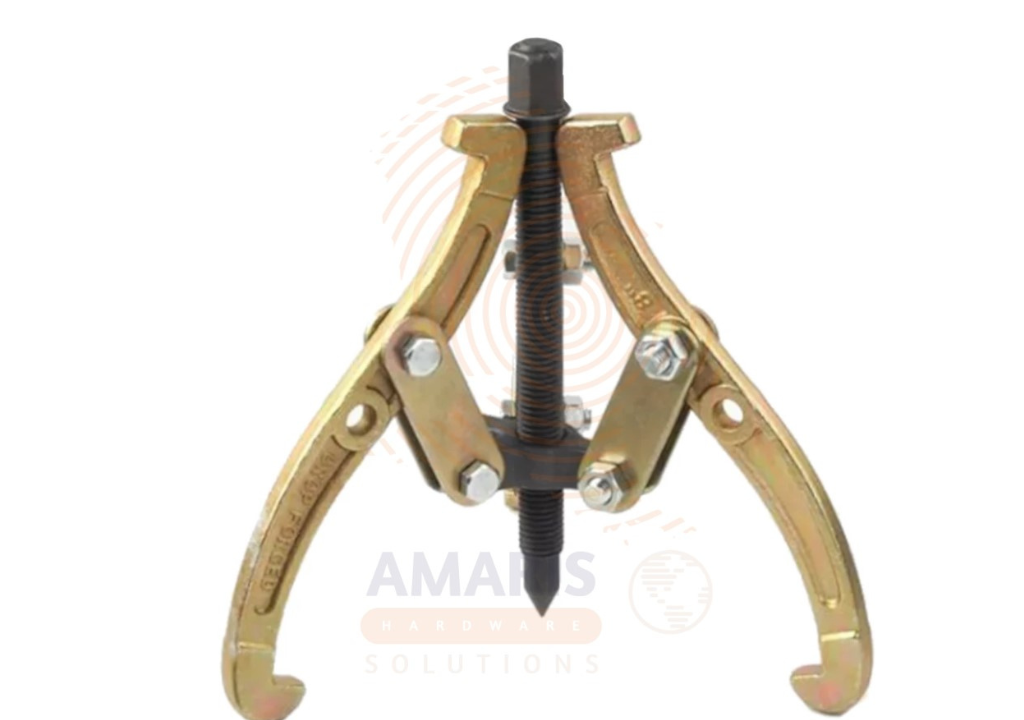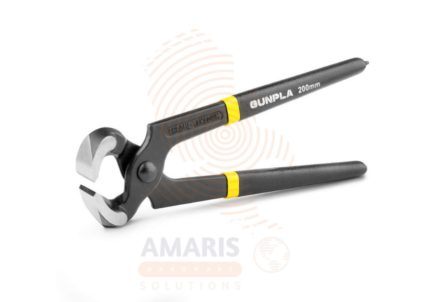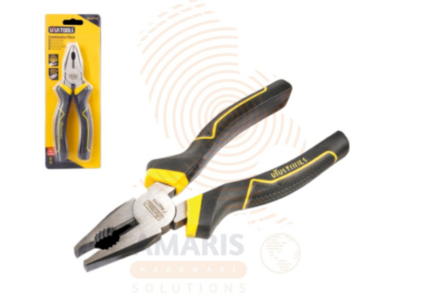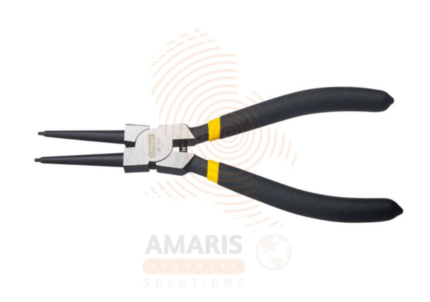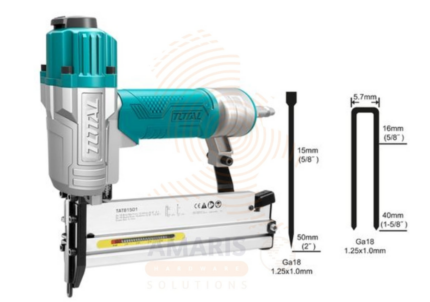
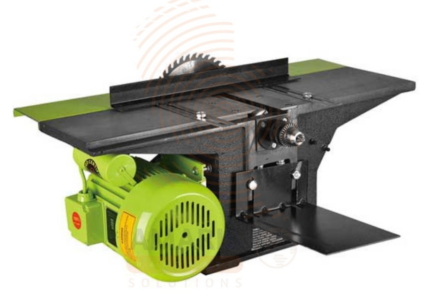
2 jaw bearing and gear puller
A 2 jaw bearing and gear puller is a mechanical tool designed for the purpose of removing bearings, gears, or other tightly-fitted components from a shaft or axle. It typically consists of two jaws or arms that can be adjusted to grip onto the part to be removed. The jaws are connected to a central screw or spindle, which, when turned, applies force to the jaws, pulling the component off the shaft.
This type of puller is particularly useful in situations where a component is stuck or tightly fitted onto a shaft, making it difficult to remove by other means. The adjustable jaws allow for a secure grip on the part, and the mechanical advantage provided by the screw mechanism enables controlled and gradual force application for effective extraction.
In summary, a 2-jaw bearing and gear puller is a versatile tool used in mechanical applications to safely and efficiently remove tight-fitting components like bearings and gears from shafts or axles.
Table of Contents
Toggle2 jaw bearing and gear puller
Uses
-
Bearing Removal:
-
-
One of the primary uses of a 2-jaw puller is to remove bearings from shafts. Bearings are often press-fitted onto shafts, and a puller is necessary to safely and efficiently extract them without causing damage.
-
-
-
Gear Extraction:
-
-
Gears can be tightly fitted onto shafts, especially in machinery and automotive applications. A 2-jaw puller is effective in gripping onto gears and pulling them off the shaft without causing damage to the gear or the shaft.
-
-
-
Pulley Removal:
-
-
Pulleys in engines, motors, or other systems may require removal for maintenance or replacement. A 2-jaw puller can be used to extract pulleys safely without damaging them or the underlying shaft.
-
-
-
Bushings and Sleeves:
-
-
When bushings or sleeves are press-fitted onto a shaft, a 2-jaw puller can be used to extract them. This is common in various mechanical assemblies.
-
-
-
Hub and Wheel Bearing Removal:
-
-
In automotive repair, a 2-jaw puller can be employed to remove hubs or wheel bearings that are tightly seated on axles.
-
-
-
Steering Components:
-
-
Components in the steering system, such as tie rod ends or ball joints, may be press-fitted. A 2-jaw puller is useful for safely removing these components without causing damage.
-
-
-
Mechanical Repairs:
-
-
In general mechanical repairs and maintenance, this type of puller is often used when dealing with components that need to be disassembled and replaced.
-
-
-
Machine Maintenance:
-
In industrial settings, the 2-jaw puller is valuable for maintenance tasks where press-fitted components need to be removed for inspection or replacement.
-
-
Custom Applications:
-
-
The versatility of a 2-jaw puller allows it to be adapted for various custom applications where the removal of tightly-fitted components is required.
-
Safety Precautions
-
Personal Protective Equipment (PPE):
-
Wear appropriate personal protective equipment, including safety glasses or goggles to protect your eyes from potential flying debris.
-
-
Inspect the Tool:
-
Before using the puller, inspect it for any damage, wear, or defects. Ensure that the jaws are in good condition and the screw mechanism operates smoothly.
-
-
Choose the Right Size:
-
Select a puller that is appropriate for the size of the component you are working on. Using the right size ensures proper engagement and reduces the risk of tool failure.
-
-
Follow the Manufacturer's Instructions:
-
Adhere to the manufacturer's guidelines and instructions for the specific 2-jaw puller you are using. This includes load capacity, recommended usage, and any specific safety precautions provided by the manufacturer.
-
-
Secure the Work Area:
-
Ensure that the work area is clean, well-lit, and organized. Remove any unnecessary tools or equipment to prevent tripping hazards.
-
-
Stabilize the Work piece:
-
Secure the work piece properly to prevent unexpected movement. If possible, use additional clamps or supports to stabilize the component being pulled.
-
-
Apply Even Force:
-
Apply force evenly when using the puller. Avoid excessive force that may lead to sudden component release or damage to the tool.
-
-
Use the Right Technique:
-
Follow the recommended technique for using the 2-jaw puller. Ensure that the jaws are properly aligned and centered on the component to avoid uneven pressure.
-
-
Inspect Components Before Pulling:
-
Check the condition of the components before attempting to pull them. Components under excessive stress or damage may fail unexpectedly, leading to potential hazards.
-
-
Proper Handle Positioning:
-
Position yourself in a way that allows you to have proper leverage and control over the tool. Use the handles of the puller in a manner that minimizes the risk of hand or arm injuries.
-
-
Avoid Using Excessive Force:
-
Do not use excessive force that goes beyond the tool's rated capacity. If excessive force is required, reassess the situation and consider alternative methods or seek professional advice.
-
-
Keep Hands Clear:
-
Keep your hands and other body parts clear of the moving parts of the puller to prevent injuries. Use caution when operating the tool to avoid pinching or crushing hazards.
-
-
Work in a Well-Ventilated Area:
-
If you are working with materials that produce fumes or dust, ensure that you are in a well-ventilated area or use appropriate respiratory protection.
-


 Acrylic Sealants
Acrylic Sealants Construction Adhesives
Construction Adhesives Double-Sided Tape
Double-Sided Tape Duct Tape
Duct Tape Electrical Tape
Electrical Tape Epoxy & Resins
Epoxy & Resins Masking Tape
Masking Tape
 Automotive Wrenches & Socket Sets
Automotive Wrenches & Socket Sets Battery Chargers & Jump Starters
Battery Chargers & Jump Starters Car Jacks & Stands
Car Jacks & Stands Car Wash & Detailing Products
Car Wash & Detailing Products Diagnostic Tools
Diagnostic Tools Tire Inflators
Tire Inflators Vehicle Lighting
Vehicle Lighting Oil & Lubricants
Oil & Lubricants
 Adhesives & Sealants
Adhesives & Sealants Bricks & Blocks
Bricks & Blocks Cement & Concrete
Cement & Concrete Drywall & Plaster
Drywall & Plaster Flooring (Tiles, Wood, Laminate)
Flooring (Tiles, Wood, Laminate) Lumber & Plywood
Lumber & Plywood Paints, Primers & Coatings
Paints, Primers & Coatings Insulation Materials
Insulation Materials Roofing Materials
Roofing Materials
 Circuit Breakers
Circuit Breakers Electrical Cables & Wires
Electrical Cables & Wires Switches & Sockets
Switches & Sockets Fuses & Relays
Fuses & Relays Connectors & Terminals
Connectors & Terminals Electrical Boxes & Panels
Electrical Boxes & Panels Conduit & Fittings
Conduit & Fittings Lighting Fixtures & Bulbs
Lighting Fixtures & Bulbs Extension Cords & Power Strips
Extension Cords & Power Strips
 Anchors
Anchors Bolts
Bolts Clips & Clamps
Clips & Clamps Screws
Screws Nuts
Nuts Washers
Washers Rivets
Rivets Nails
Nails Threaded Rods
Threaded Rods
 Hammers
Hammers Measuring Tools (Tapes, Levels, Calipers)
Measuring Tools (Tapes, Levels, Calipers) Screwdrivers
Screwdrivers Pliers & Cutters
Pliers & Cutters Saws & Blades
Saws & Blades Chisels & Punches
Chisels & Punches Allen Keys & Hex Keys
Allen Keys & Hex Keys Ratchets & Socket Sets
Ratchets & Socket Sets Wrenches & Spanners
Wrenches & Spanners
 Power Tool Accessories (Blades, Bits, Discs)
Power Tool Accessories (Blades, Bits, Discs) Rotary Tools
Rotary Tools Saws (Circular, Jigsaw, Reciprocating)
Saws (Circular, Jigsaw, Reciprocating) Drills & Drivers
Drills & Drivers Grinders & Sanders
Grinders & Sanders Heat Guns
Heat Guns Nail Guns
Nail Guns Impact Wrenches
Impact Wrenches Batteries & Chargers
Batteries & Chargers
 Pipes & Fittings (PVC, Copper, PEX)
Pipes & Fittings (PVC, Copper, PEX) Plumbing Tools
Plumbing Tools Pumps & Motors
Pumps & Motors Sealants & Adhesives for Plumbing
Sealants & Adhesives for Plumbing Valves & Taps
Valves & Taps Water Heaters
Water Heaters Drainage Systems
Drainage Systems Faucets & Fixtures
Faucets & Fixtures Hoses & Tubing
Hoses & Tubing
 Hinges & Latches
Hinges & Latches Hooks & Brackets
Hooks & Brackets Window Hardware
Window Hardware Chains & Cables
Chains & Cables Casters & Wheels
Casters & Wheels Shelving & Storage Systems
Shelving & Storage Systems Door Handles & Locks
Door Handles & Locks Drawer Slides & Cabinet Hardware
Drawer Slides & Cabinet Hardware
 Personal Protective Equipment (PPE)
Personal Protective Equipment (PPE) Respirators & Masks
Respirators & Masks Safety Glasses
Safety Glasses Safes
Safes Security Cameras
Security Cameras Gloves
Gloves Helmets
Helmets Ear Protection
Ear Protection Fire Safety Equipment
Fire Safety Equipment Locks & Padlocks
Locks & Padlocks Motion Sensors & Alarms
Motion Sensors & Alarms
 Garden Fencing
Garden Fencing Garden Furniture Hardware
Garden Furniture Hardware Lawn Mowers
Lawn Mowers Trimmers & Edgers
Trimmers & Edgers Shovels & Spades
Shovels & Spades Rakes & Hoes
Rakes & Hoes Pruning Shears & Loppers
Pruning Shears & Loppers Watering Systems (Hoses, Sprinklers, Nozzles)
Watering Systems (Hoses, Sprinklers, Nozzles)
 Interior Paints
Interior Paints Paint Brushes & Rollers
Paint Brushes & Rollers Paint Strippers & Thinners
Paint Strippers & Thinners Paint Trays & Accessories
Paint Trays & Accessories Exterior Paints
Exterior Paints Spray Paints
Spray Paints Primers & Undercoats
Primers & Undercoats Varnishes & Stains
Varnishes & Stains
 Gaskets & Seals
Gaskets & Seals Hydraulic Fittings
Hydraulic Fittings Industrial Fasteners
Industrial Fasteners Industrial Hoses
Industrial Hoses Lubricants & Greases
Lubricants & Greases Metal Sheets & Bars
Metal Sheets & Bars Bearings & Bushings
Bearings & Bushings Belts & Pulleys
Belts & Pulleys
 HVAC Filters
HVAC Filters Insulation for HVAC
Insulation for HVAC Air Conditioners
Air Conditioners Refrigerants
Refrigerants Ventilation Ducts & Fittings
Ventilation Ducts & Fittings Thermostats & Controllers
Thermostats & Controllers Fans & Blowers
Fans & Blowers
 Pegboards & Hooks
Pegboards & Hooks Shelving Units
Shelving Units Storage Bins & Containers
Storage Bins & Containers Toolboxes & Tool Chests
Toolboxes & Tool Chests Workbenches
Workbenches Drawer Organizers
Drawer Organizers Labeling Supplies
Labeling Supplies
 Welding Accessories (Clamps, Brushes)
Welding Accessories (Clamps, Brushes) Welding Electrodes & Rods
Welding Electrodes & Rods Welding Helmets & Gloves
Welding Helmets & Gloves Welding Machines
Welding Machines Soldering Irons & Stations
Soldering Irons & Stations Flux & Solder Wire
Flux & Solder Wire
 Generator Accessories
Generator Accessories Inverters
Inverters Portable Generators
Portable Generators Power Inverters
Power Inverters Transfer Switches
Transfer Switches Diesel & Gasoline Generators
Diesel & Gasoline Generators
 Transport Equipment: Carts, Dollies, and Hand Trucks
Transport Equipment: Carts, Dollies, and Hand Trucks Storage Solutions: Pallets, Racks, and Containers
Storage Solutions: Pallets, Racks, and Containers Lifting Equipment: Hoists, Cranes, and Jacks
Lifting Equipment: Hoists, Cranes, and Jacks Conveyors and Accessories: Belts and Rollers
Conveyors and Accessories: Belts and Rollers